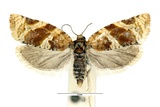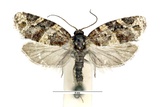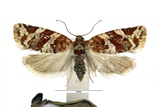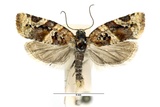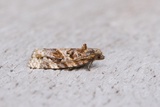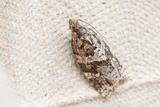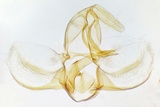Argyrotaenia ljungiana (Thunberg, 1797) Species
Last modified: Oct. 2, 2025, 1:41 p.m.
A common species throughout Belgium, especially in the northern part.
Details
- Classification
- Family: Tortricidae > Subfamily: Tortricinae > Tribus: Archipini > Genus: Argyrotaenia > Species: Argyrotaenia ljungiana
- Vernacular names
- Bruinbandbladroller (NL), Heather Tortrix (EN), Kiefernsämlingswickler (DE)
- Synonyms
- Argyrotaenia sylvana (Hübner, 1799) , Argyrotaenia pulchellana (Haworth, 1811) and Argyrotaenia politana (Haworth, 1811, nec (Denis & Schiffermüller, 1775)
- First mention in Belgium
- De Fré Ch. 1858. Catalogue des Microlépidoptères de la Belgique. — Annales de la Société entomologique belge 2: 45–162. On page 71.
- Status
-
Native
Distribution
Caterpillar
Late instar larvae are pale green with a yellowish brown head. The prothoracic shield is yellowish green with a black posterolateral mark and black shading on the posterior margin. An anal comb with 6-8 teeth is present.
Bionomics
The larvae live gregariously when young, later on singly in spun leaves on the food plant.
Pupation takes place in a cocoon in a spun leaf or, for the second generation in detritus on the ground.
The adults are active in the afternoon and later come to light.
Flight periods
The adults fly in two generations in April/May and again from June towards September.
Observed on
- Substrates:
- Polyphagous
The larvae live on a variety of plant, but especially on Erica, Calluna, Myrica or Vaccinium. It even lives on various coniferous trees.
Habitat
It occurs in gardens, parks, moorland, heathland etc...
